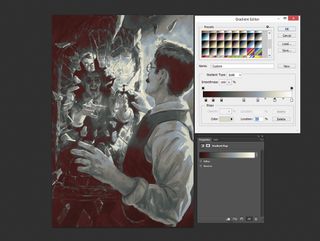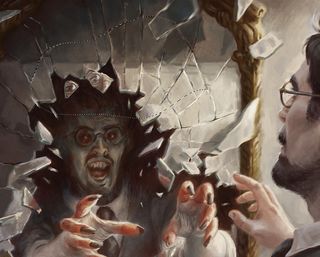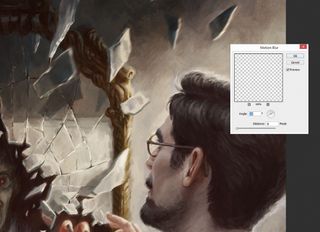Creating an image with a mirror shattering can be challenging on several fronts. The main elements to consider are establishing light sources and angles of the shards for the reflections to make a believable broken mirror, and creating motion and action in the scene that doesn’t overwhelm the focal point: our sinister reflection and the reaction to its attack.
After developing a thumbnail that communicates the story within the frame, I take some photo reference in front of a mirror to get a better idea of how the light and reflections will work and get a sense of photorealism. Reference and thumbnail in hand, I start working up a value sketch in Photoshop with some additional planning help from SketchBook Pro for creating a symmetrical outline of the mirror design to lay into the scene.
With a value sketch complete, I apply some base colours and begin rendering. As I render to final, I keep a close eye on edges that begin to distract from the focal point of the scene. I use a soft Blender brush on edges that draw attention to knock them back, as well as motion blurs and radial blurs on shards of glass to give them momentum while softening them from focus.
Painting shattered glass: 3 top tips
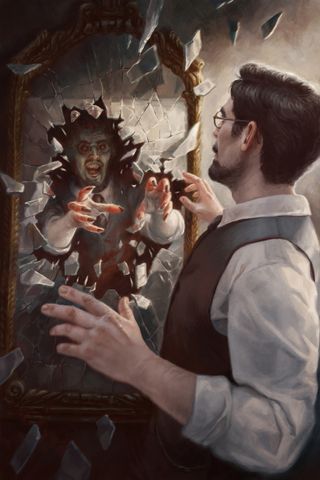

Thank you for reading 5 articles this month* Join now for unlimited access
Enjoy your first month for just £1 / $1 / €1
*Read 5 free articles per month without a subscription

Join now for unlimited access
Try first month for just £1 / $1 / €1
Related articles
-

-

-
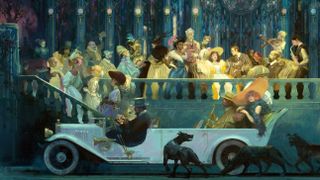
-

